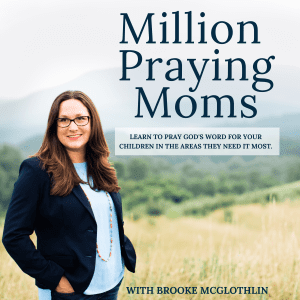
What are some hints to look for if you suspect this is your boy’s love language?
If your child likes to be by your side even during the most mundane of tasks, he might feel most loved through quality time. My four-year-old loves to watch and help me cook, clean the bathrooms, and run errands. He is the son that will always volunteer to come with me when I need to go out, even if it is simply walking to the mailbox. | Christie Thomas
My six-year-old’s favorite phrases are, “Watch me, Mommy!” and “Sit with me, Mommy!” and “Play with me, Mommy!” Sometimes discovering a child’s love language is simply listening to what they are asking most of you. | Julie Brasington
“Mommy, come play legos with me…” “Mom, come hear this new song I learned on the guitar…” “Hey, watch me! I’ll get you a chair and you can sit on the driveway and watch me roller skate.” Oh, you know what I’m talking about, if your child speaks “quality time!” The first time I started understanding this love language was shortly after I married their father. “Hey, Babe, do you want to come to Home Depot with me?” Ummm…no. But the Holy Spirit was kind enough to whisper in my ear, “This isn’t about Home Depot, this is about showing your husband that you love him and want to be with him.” Needless to say, the apples didn’t fall far from the tree. | Wendy Speake
To recognize the love language of quality time, I think it is best to be intentionally aware of how kids respond to it when you give them time. While all kids appreciate their parents’ time and attention, some kids really light up and you just know that quality time is their language. My oldest son is very independent, and rarely asks for anything. Yet more recently, I began offering him chunks of time to work with him on some writing he is doing. After sitting side-by-side, editing his work, he was so thankful and happy. He kept thanking me all day. I had no idea how much that “quality time” would mean to this boy! Since that day, we both know that when time allows, one of our very favorite things to do together is hide away and edit one of his stories. It fills his love tank, and—as you can guess—I love every minute of it! Sometimes we don’t know our kids’ love languages until we just start trying things! You never know when you might hit the jackpot! | Monica Swanson
I had a hard time realizing this was my oldest son’s love language. He was a fussy baby, difficult to put to sleep, but not at all a “snuggler.” As he grew, he was quiet, and I found he could easily entertain himself as long as I was nearby. This proved immensely beneficial as we added another baby to the family. So I was hard put to know what this lovely child really needed from me, as he seemed so independent. Yet, much as he could self-entertain, he would frequently ask me to play with him, which I’d try to accommodate, or I’d have a genuinely good reason why I couldn’t (dirty diaper, feeding time, getting in the car, etc). One day, he asked me to play, and in my busy-mom fashion, I tried to multi-task, while also surreptitiously picking up toys along the way. My son stopped me and said, “Mom! You’re not playing, you’re organizing!” Caught! That’s when it hit me that he really just wanted me to be very present with him in these playtime moments—not distracted, not rushed, but just with him. He didn’t mind if I didn’t “play hard” as long as I was in the moment with him. It’s changed the way I interact with him, and I now purposefully set aside distractions whenever we play together. | Julie Kieras
Tell us about some of the intentional ways you fill your boy’s love tank when it comes to quality time?
Oliver is my middle son, so I have to be extra intentional about making time for just the two of us. I allow him to help with household tasks, even though it usually slows me down! I invite him to join me when running errands, and try not to go crazy reading the same book over and over. He also has a lot of trouble letting me go when I need to go to work. I have learned that if I can take a few minutes to spend with just Oliver, he separates much more easily. | Christie Thomas
My firstborn loves to have an audience. Whether that be watching him play basketball, or perform Beatbox, or commentate a Nascar race he sets up in his bedroom, the best gift I can give him is my undivided attention. This can be hard for me, because I am such a do-er (you can read more about my struggle and surrender in this article)! But intentionally carving out small, realistic pockets to say ‘yes’ to him and set my phone/computer/laundry aside is one way that I am able to fill his little love tank. | Julie Brasington
My quality-time kid loves having family traditions to look forward to—pancakes on Saturday mornings, birthday bowling dates, Friday night pizza, ice cream party on the last day of school, etc. Traditions mean time spent together—which is what quality-time kids love! | Julie Brasington
Homeschooling my kid who loves quality time has been tricky for me. We spend so much time together that I’m eager for him to go play on his own when the work is through. But, what he really wants is some special one-on-one time doing something fun. So I now plan little outings for us to do at the end of every homeschool week. It takes forethought, planning, and sacrifice. Yes, sacrifice. That’s the biggest thing I’ve learned when it comes to loving any of my kids intentionally. Because loving others based on their needs, not our own—speaking their primary love language, not our own—is a sacrifice. I have to remind myself daily to stop giving love in the way I would like it given to me, in my natural mother tongue. Instead, I must purposefully choose to love in ways that aren’t as comfortable for me, but minister deeply to their little hearts. | Wendy Speake
Gary Chapman says, “Togetherness has to do with focused attention,” and that’s the aspect I was missing previously. Now I aim to be focused when we play together, often by simply asking questions or setting aside distractions like my phone or even my busy thoughts! I like to use my youngest son’s naptime to spend with my oldest as much as I can. Even if we just read side by side on the bed, he enjoys me being there with him doing the activity we both love. Although getting down on the floor and playing isn’t my strong point, when we are actively playing, I ask him what my role should be in the game; I can tell by his shining eyes and smile that he appreciates me being wholly in the moment with him. | Julie Kieras (Source: Speaking the Love Language of Quality Time)

What are some practical ways you can teach your boys to love others well while working within the strength of their love language, quality time?
I think a great thing to encourage in a quality-time child is teaching them to ask people questions. This fosters conversation, which can bring about meaningful moments. I also think quality-time kids can use their desire to be with people as a way to comfort those who are hurting. Sometimes it’s good to just sit quietly and be! | Julie Brasington
My teenage son whose love language is quality time has begun practicing this by giving people his time and attention as well. He has practiced asking other people questions (something typically not easy for a teen!) and being a good listener. He has realized how much people appreciate someone showing interest in their lives, and he gets great satisfaction out of blessing people with that gift. | Monica Swanson
One thing I work on with my son is talking about how everyone doesn’t like the play the same way or the same game. That his brother or friends might want to do something active and busy while he wants to be quiet, or vice versa. I want him to see that, as much as he enjoys quality time with people he loves, he should also invest his time into others as well to meet their love needs. | Julie Kieras
WHAT ARE SOME RESOURCES THAT WOULD BLESS BOYMOMS WHO HAVE SONS WITH THIS LOVE LANGUAGE?
My quality-time boy appreciates getting new sports balls, games, puzzles, books, and anything that requires more than one person to participate with the gift. | Julie Brasington
Teaching my children to love one another well when they all speak different languages is a challenge, too. Here’s an article I wrote about the awkwardness and the awesomeness of it all. | Wendy Speake
A few years ago I wrote this guest article for Melissa & Doug about improving sibling play with cooperative toys. I think any kind of game or toy that allows for multiple users/players is going to increase the focused attention and interaction between you and your child (or that child and their siblings), thus creating a great sense of quality in the time they are spending with you, siblings, or friends. Puzzles, board games, and building blocks (or LEGO bricks!) are examples of toys that allow for multiple users, but also require greater focused attention and interaction. Thus, your child will likely experience greater satisfaction in the quality of the time they spend with you, a sibling, or a friend. | Julie Kieras

This article on physical touch is the first article in a five-part series on The Love Languages of Boys. Click over here to read an overview on what this series covers, access a printable assessment for children and teens, and download your FREE printable Love Language Worksheet along with other resources!





